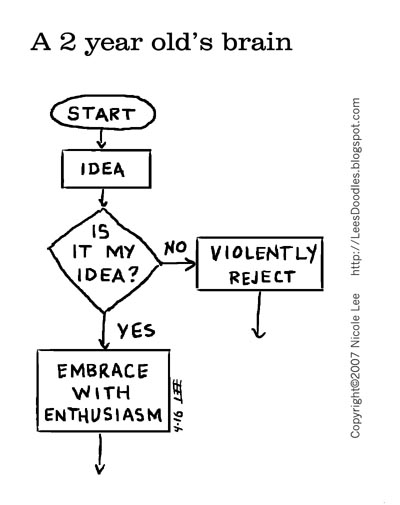Here’s a thought piece covering the use and value of e-learning in the travel sector – this one made the cover story of e.learning age magazine. Again, would welcome your comments.
================================
Harnessing technology to build trust and improve customer care remains a priority for the travel sector.
There is no doubt that the travel industry is in a state a flux. As the recession gets worse, redundancies continue to plague the sector, with 5,000 reported since autumn 2008 from recognised names such as Hertz and Delta Air Lines. British Airways has also announced a pay freeze.
In these circumstances, trust has become a major issue for the sector, particularly in the wake of collapsing firms such as XL Leisure. ABTA has since appointed a PR consultancy to address the issue and help restore consumer confidence in booking a holiday. With the pound down, people are also staying closer to home and foregoing extras, such as car hire and flight upgrades.
To add further woes, travel firms must digest an unenviable cocktail of challenges, including changing energy prices, eco-tourism, sustainability, online booking and financial modelling, as well as a high staff turnover, which is double that of other industries.
On a brighter note, Travel Weekly recently reported that holidaymakers plan to spend the same in 2009 as 2008, with companies such as Hays Travel actively recruiting and EasyJet announcing a fourth quarter 2008 profit increase.
So, what is the likely impact on training? The challenges faced by the travel sector clearly demonstrate a need for ongoing training. And to survive the recession, travel firms must focus training on customer service skills to help rebuild trust and generate a long-lasting competitive edge. Changing needs of travel customers also bring different knowledge demands and, as learning and development professionals, we need to keep up. Sustainable destinations and offsetting carbon footprints were key desires in previous years, but these are now being replaced by cost as the priority.
Henrietta Palmer, e-learning manager at TUI UK and Ireland, confirms this trend, saying: "Aside from vital compliance and product knowledge training, other requirements can be incredibly reactive. It's all about one thing and as soon as something happens, another completely different skill need becomes the priority. As learning professionals we need to think smart and have a portfolio of learning objects, a library of modules and tools to use and repurpose as needed."
Delivering business benefits
As an industry, travel has a highly evolved learning culture, with nearly one in five more people in the sector, compared to all businesses, receiving training and ongoing development last year, according to People 1st and the ABTA Travel Industry Training and Development Benchmark Survey 2008. Crucially, the same report demonstrated clear business benefits from training, including increased customer satisfaction reported by 96% of survey participants, increased profits (88%), a rise in productivity (83%) and a gain in sales (84%).
While the economic climate brings uncertainty, it is heartening to hear that the majority in travel do not plan to reduce training budgets and half of them expect a slight increase over the next five years. This is different to other sectors, which plan to cut or freeze training budgets in 2009, according to research recently conducted by Brightwave. The research also found that, despite the overall reduction, half of those questioned expect e-learning spend to rise in 2009, qualifying the increase in demand we are seeing for effective online solutions.
As training and ongoing learning are crucial to the travel sector and with large volumes of people involved in the industry, e-learning was introduced in its infancy by some of the larger agencies, hotel chains and air operators. E-learning meets a large number of travel training needs as it is efficient, persistent, consistent, accessible and engaging. It can also help bring large numbers of new recruits up to speed through effective induction and ensure high levels of compliance are met. Further, it improves customer service, builds product knowledge, fulfils multiple language requirements and provides on the job support.
Another reason for the early popularity of e-learning in travel is that it enables new training opportunities, such as critical job simulations targeting cabin crew and virtual scenarios for customer care and sales. We expect e-learning to gain greater popularity as it delivers more cost reductions, faster delivery, higher levels of learner engagement and more opportunities to train people where and when it suits them - crucial for time-shift work.
The future is bite sized
For the travel sector to continue exploiting e-learning in future, it needs to continue viewing technology enabled learning as an investment and not a cost as the rewards and return on investment are huge. There is a great opportunity for learning innovation using new tools and models of working. Travel companies should also take a more flexible approach to e-learning dependant on their goals, learners and risk.
As we move away from traditional and often unnecessarily lengthy courseware, learning progresses towards more digestible and memorable learning bites, or knowledge chunks, which are more engaging. These can be delivered via podcasts, video on demand, social learning, computer simulations or games to help change behaviour and improve performance. Learners simply select the format that suits their need from a collaborative learning portal designed with performance support in mind.
Wendy Stubbs at British Airways supports this view: "Bite sized knowledge chunks will change the way that we do mandatory short sharp courses. If there's a new piece of compliance, let's validate first then get learners to take the course. This frees us up to spend the budget on important stuff that is business critical."
Social networking
E-learning is helping to generate more effective informal learning as it blends formal online training with social networking and knowledge transfer. With generation Y so well represented in the travel sector, informal or social learning is likely to take hold much faster than in other industries. Companies have a lot to gain by connecting people so that valuable knowledge and best practice can spread faster.
At Brightwave, we are seeing travel firms exploring the potential of social learning ahead of other sectors and expect this to grow as technology costs come down and new models are created. A wiki devoted to destinations or the handling of difficult customer scenarios could help share knowledge and best practice live. Imagine this, supported by a portfolio of learning bites and communication pieces, and you have a powerful learning resource. As part of this mix, mobile learning, intuitively aligned to a dispersed travel workforce is poised to give true access to location-based services and bite sized learning.
British Airways is piloting BABlend.net, a professional networking tool that enables employees to learn from each other. It is popular with staff and has already identified what works best. For example, first screens and tags are vital to early engagement.
Travel companies that increase their commitment to training during the recession will be in a good position to prosper once the economy picks up. With customer service so fundamental to success, a 96% increase in customer satisfaction from ongoing learning and development can be ignored only at companies' commercial peril.
Looking ahead, Palmer at TUI, says: "We will all be looking to maximise budgets, repurpose resources, maximise informal opportunities, reduce business travel and exploit technologies to work across distances. Alongside cost reduction and customer care, sustainability is high on the agenda. E-learning is a way we can make an impact."
There is no doubt that technology will increasingly move centre stage to deliver business critical training with increased efficiency. But the shift also catalyses a move to more engaging and timely learning experiences for a sector that, while hit first by the recession, will also lead the recovery into a new economic landscape.



